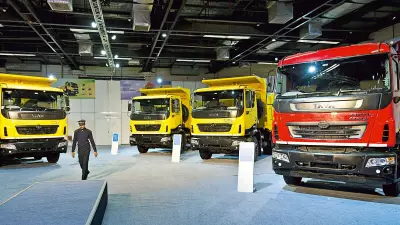
Exactly one year after announcing its premium 'IndiGoStretch' business class product, India's largest airline has significantly altered its deployment strategy while maintaining its aircraft induction targets. The airline, which launched Stretch on its 18th birthday with ambitious domestic expansion plans, has since pivoted toward international routes in response to market dynamics.
From Domestic Focus to International Expansion
On its anniversary last year, IndiGo announced plans to operate Stretch on 12 domestic routes using 45 aircraft by December 2025. While the airline appears on track to induct the planned 45 aircraft by next month—a notable achievement amid global supply chain challenges—its route strategy has undergone substantial changes.
Currently, IndiGo offers Stretch on only seven domestic routes: Delhi-Mumbai, Delhi-Bengaluru, Delhi-Hyderabad, Delhi-Chennai, Mumbai-Bengaluru, Delhi-Kolkata, and Mumbai-Kolkata. The airline has confirmed that Mumbai-Chennai will soon join this list, bringing the total to eight domestic routes, still short of the originally planned twelve.
The strategic shift became evident as IndiGo began deploying Stretch aircraft on international routes, starting with Bangkok and expanding to markets like Singapore, Dubai, and Phuket. This recalibration suggests either weaker-than-expected domestic response or stronger international opportunity.
Product Inconsistencies and Future Challenges
IndiGo's Stretch product now comprises multiple configurations with varying passenger experiences. The airline damp-leased Dreamliners from Norse Atlantic starting March this year, branding Norse's 56 Premium Economy seats as IndiGoStretch on European routes to Amsterdam, Manchester, Copenhagen, and London.
Significant service disparities exist across the Stretch network. Passengers flying Stretch to European destinations receive hot meals, lounge access, and alcohol, while those on ASEAN, Gulf, and domestic Stretch flights must make do with cold meals and no lounge access. This inconsistency could create consumer confusion about what exactly the Stretch product includes.
According to aviation analytics company Cirium, the Stretch product currently represents only 0.6% of IndiGo's total seats one year after launch. The airline operates 20 weekly Stretch flights using Dreamliners and 1,496 weekly flights using its own A321neo aircraft with Stretch configuration, alongside 14,553 weekly flights on mono-class planes.
Competitive Landscape and Future Outlook
IndiGo's Stretch launch coincided with significant industry changes, particularly the merger of Vistara with Air India, which created an overnight capacity leader on India's top routes. While IndiGo's Stretch product falls short of Air India's domestic and regional business class offering, its fares also position it between Air India's Premium Economy and Business class.
Notably, IndiGo's A321neo with Stretch configuration offers 12 business class seats, compared to Air India's A320neo which typically features only 8 business class seats. This gives IndiGo a capacity advantage in the premium segment.
Industry observers suggest the product inconsistencies might stabilize after 2027 when IndiGo's own A350s enter service with a dedicated business-class product currently under development. Until then, the airline faces the challenge of managing consumer expectations across different aircraft types and route categories.
The Stretch strategy represents IndiGo's careful balancing act between premium service aspirations and its low-cost carrier heritage. As the airline continues to refine its approach, the coming year will reveal whether this hybrid model can successfully capture India's growing premium travel market while maintaining the carrier's cost leadership position.





